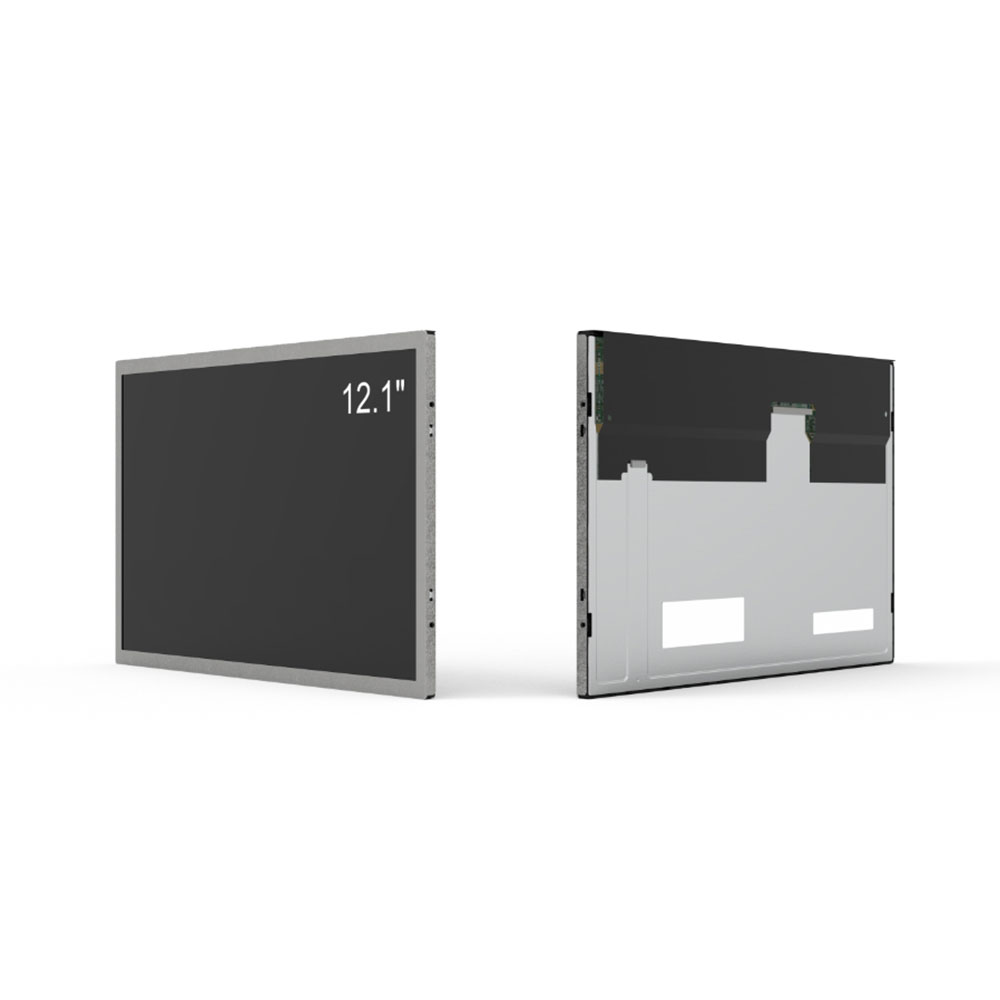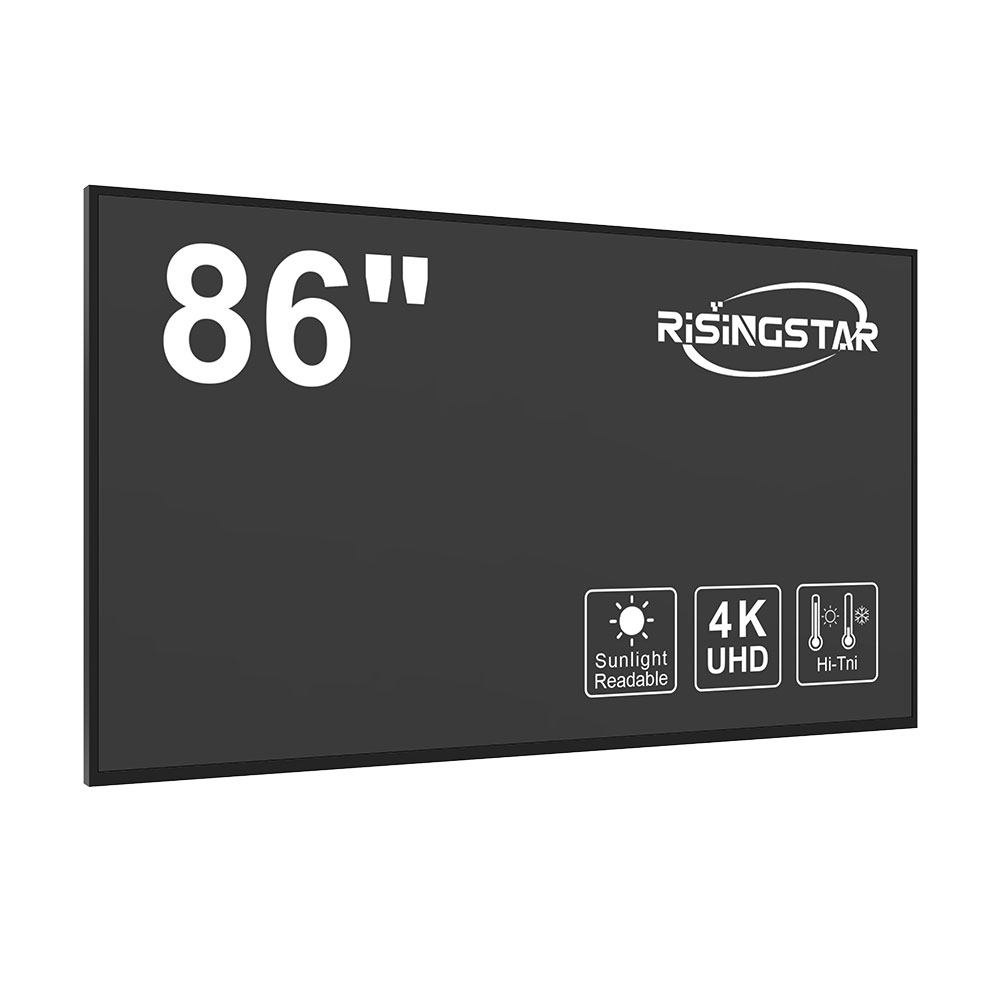屋外環境でデジタルサイネージを展開するとき、適切なLCDスクリーンを選択することは美学的な問題だけではなく、可視性、耐久性、パフォーマンス、投資収益に影響を与える重要な決定です。小売店,交通ハブ,スポーツ場,公共情報キオスクを運営している場合でも,屋外評価されたLCDディスプレイを選ぶには,技術的精度,環境意識,長期的なコスト効率が必要です.
屋外環境の独特な課題を理解する
屋外のLCDスクリーンは 屋内の相手よりもはるかに厳しい条件に直面しています日光直接曝露は,スクリーンの読み取り能力を最大70%減らすことができますが,適切に設計されていない場合は,極端な温度 -30°Cから+60°Cまでの内部部品を損傷させることができます.湿気,湿気,湿気,湿湿気,湿湿気,湿湿気,湿湿湿気,湿湿気 湿気,湿湿湿湿湿気,湿湿湿湿気,湿湿湿気気,湿湿湿気したがって,選択の最初のステップは,IP65 (防IP65) やIK10 (耐選択防そのそのその他の標準を使用して,サイト特定の環境を評価することです.これらの認証は,スクリーンが日々の操作ストレスを生き延びることを保証します.
優先順位に置くべき主要な技術仕様

1. 明るさ(Nits):
直射日光の可視性のために最低5,000ニットが推奨されていますが、ハイエンドモデルはしばしば10,000ニットを超えています。例えば、ニューヨークや東京のような都市の都市広告ディスプレイでは、周囲光レベルは平均10,000ルクスで、8,000〜10,000ニットが不可欠です。Digital Signage Federationの業界調査によると、5,000ニットのディスプレイは正午の太陽でユーザビリティを失うことが示されています。より高い明るさは、一日の時間に関係なく一致したメッセージングを保証します。

2. 視野の角度&色の精度:

広い視野角(178°水平/垂直)は、歩行者交通エリアで必須である側面から見るときに画像の視視覚を防ぐことができます。高度なIPSパネルは,マーケティングキャンペーンにおけるブランドの完整性にとって重要な,角度間の色の一致性を維持します.ヨーロッパのマクドナルドの屋外キオスクからのケーススタディは、色の正確さがあらゆる角度で安定しているときにユーザーがブランドをよりプロフェッショナルと認識していることを示しています。
3. 耐久性評価(IPおよびIK):
IP65は,水のジェットや防防防防防防防IP65は,沿岸地域や頻繁な雨露に最適です.IK10は5ジュールの機械的衝撃(例えば落ちる物体や偶然の衝撃)から保護します。欧州委員会の2023年の報告書では、屋外ディスプレイの失敗の62%が不十分なシールによるものであり、適切なIP認証の必要性を強調した。
4. Thermal Management:
Efficient heat dissipation systems, such as passive cooling with aluminum heatsinks or active fans with automatic speed control, are vital. Overheating can cause pixel degradation and premature failure. In Dubai, where outdoor temperatures regularly exceed 45°C, manufacturers like LG and Samsung use intelligent thermal algorithms to adjust brightness and fan speed dynamically—extending lifespan by over 40%.
5. Power Efficiency & Environmental Compliance:
Look for Energy Star-certified or EPEAT Gold-rated screens. These models consume less power without sacrificing brightness, reducing long-term electricity costs. In Germany, government incentives now support energy-efficient outdoor displays through tax credits, underscoring the importance of sustainability compliance.
Display Technology Options: LED vs. LCD
While LED displays dominate large-scale applications (like billboards), LCDs remain preferred for high-resolution content delivery, especially in medium-to-large formats (42”–75”). OLED technology offers superior contrast but lacks the brightness needed for full-sun scenarios. For most business cases, LCD with LED backlighting strikes the best balance between clarity, longevity, and affordability. For example, a case study from London Heathrow Airport showed that switching from standard LCDs to high-brightness, wide-angle outdoor LCDs increased passenger engagement by 33% during peak travel hours.
Content Delivery and Remote Management
A robust outdoor display system must include remote management capabilities via cloud-based platforms (e.g., BrightSign, Scala, or Screenly). These allow real-time content updates, scheduled rotations, diagnostics, and even firmware upgrades—all crucial for maintaining uptime. According to a 2024 IDC survey, businesses using centralized management tools saw a 40% reduction in maintenance costs compared to those relying on manual interventions.
Installation and Mounting Considerations
Mounting solutions must account for wind load, vibration, and accessibility for maintenance. Aluminum frames with anti-vibration mounts are standard. For vertical installations, consider tilt-adjustable brackets to optimize viewing angles. Always ensure structural compatibility—especially in high-wind zones like coastal Florida or mountainous regions in Switzerland—by consulting local building codes and wind load standards (e.g., ASCE 7).
Maintenance and Long-Term Support
Even the toughest outdoor LCD screens require periodic checks. Schedule quarterly cleaning of filters and lenses, annual inspection of power supplies, and biannual calibration of color and brightness settings. Partner with vendors offering comprehensive warranties (minimum 3 years) and on-site support—this is non-negotiable for mission-critical deployments like hospital wayfinding or transit station information boards.
Case Study: Success in Harsh Conditions – Las Vegas Strip
The Venetian Resort deployed 40+ outdoor LCD screens along its entrance plaza. Facing extreme heat (up to 50°C), intense UV radiation, and sandstorms, they chose LG’s 65-inch outdoor LCD with 8,000 nits brightness, IP65 rating, and solar-powered backup. After two years, only 2% of units required service—well below industry averages (typically 10–15%). This success was attributed to rigorous pre-deployment testing, proper mounting, and a dedicated remote monitoring system.
In conclusion, selecting the right outdoor LCD screen involves a strategic blend of technical specs, environmental adaptation, and ongoing support. It’s not merely about buying hardware—it’s about investing in a communication channel that performs reliably year-round, enhances customer experience, and supports your brand’s visual identity. By following these best practices, businesses can future-proof their outdoor digital signage investments.
2025-07-31
2025-09-23
厳しい環境で屋外LCDスクリーンのためのIP66防水評価を達成する方法2025-09-03
最大の可視性と耐久性のための正しい屋外LCDスクリーンを選択する方法2025-07-31
ここに産業高輝度液晶画面が来る。